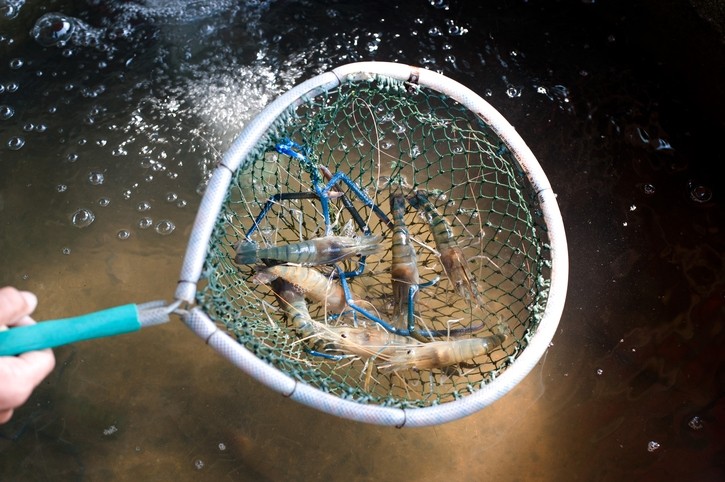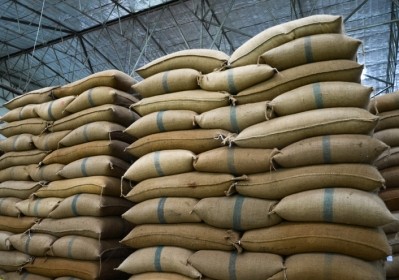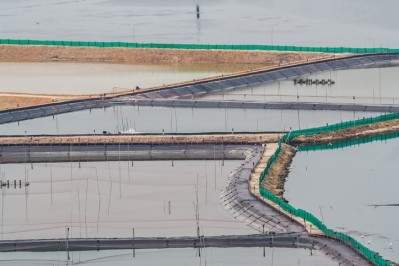US: Insect tech company develops in-feed immune boost for shrimp

The Maryland-based startup was selected as one of the finalists for this year’s Global Aquaculture Alliance’s Global Aquaculture Innovation Award for its work to develop a feed-based immune support for use with aquaculture species. It generates its immune-boosting protein using cabbage looper larvae.
The company grew out of initial work developing proteins for use in vaccines that was done by Vik Vakharia, chief science officer at the Institute for Marine and Environmental Technology and was supported by BioHub Innovation, which helps professors commercialize their innovations, said Mihir Pershad, CEO with VakSea. That initial idea was later expanded with help from the company’s chief technology officer, who had a background working with insects.
“We found that we got a better result in terms of protection for the animals and a more efficient manufacturing process than could be done by a traditional bioreactor system,” he told FeedNavigator. “Bringing those together helped us bring together the characteristics that customers want – it’s affordable and it works.”
Additionally, the use of an insect medium to generate the protein helped with the effort to use the product in a feed, he said. “With shrimp, we want to protect them at their most vulnerable, and they’re too small to inject,” he added.
“For us feed was important because every animal eats, and shrimp are fed multiple times a day,” he said. “It’s more efficient and practical we think.”
Development and market focus
Initially, the company focused on developing a product for use with European Sea Bass to address viral nervous necrosis, but consolidation within that industry, coupled with an understanding of the disease challenges faced by shrimp and prawn producers caused the company to change its focus, said Pershad.
“Especially if you speak with people from the Southeast Asian region, you’ll find that viral disease is the top priority for the majority of these farmers,” he said.
VakSea is focused on producing its products for the market in Southeast Asia, he said. However, there is potential interest in expanding into China and India in the future.
The company is currently in the process of developing two products focused on different shrimp species and diseases, he said. It is still being determined which will be brought to market first.
The products include work with white tail disease in giant freshwater prawns and white spot disease, said Pershad. The nodavirus MrNV was of interest because it was similar to the work the company had already done.
“We’ve currently done testing in labs for efficacy the next stage of development is putting it in a feed pellet and assessing the efficacy in feed pellet,” he said. On-farm studies can focus more on building confidence for farmers’ as it can be hard to know if there will be a disease outbreak, he added.
The company is forecasting about a 12- to 15-month timeline in terms of putting the first products in the market and finishing farm-based trials, he said. It also is looking for partnerships with feed manufacturers.
VakSea has tested its proteins against the extrusion process, but companies may have proprietary processes and the other ingredients in a feed would need to be examined, he said.
“What we’re in the process of doing is determining how different compositions of ingredients can impact the efficacy,” said Pershad. “That’s really the question … what formulation do we see maximizing efficacy?”
Partnering with a feed production company also appeals because of the relationships that companies build with producers, he said. However, VakSea is anticipating that it would continue to manufacture the protein product “in-house.”
“There are several proprietary steps that require significant knowhow that could be transferred to a feed partner, but it’s not in their area of expertise and it is our team’s area of expertise,” he said. “We’re comfortable with and have experience scaling this sort of manufacturing operation.”
The immune boosting product is designed to be added to shrimp feed during early growth stages likely when shrimp are in hatcheries or the nursery, he said. The support it provides appears to remain for several months after the product is removed from feed.
“We’ve shown in our initial studies we can have protection for months beyond the period during which the animals are dosed,” said Pershad. “As an example, you could feed a batch of post-larval prawns for 28 to 30 days and when you sell them to the farmer for grow out then the farmer wouldn’t need to feed them for several months.”
However, there the product also could be given to shrimp during later stages to act as a “boost” if farmers are in a disease prone area or think there could be an outbreak, he said.
“Some of that data [from the lab studies] is still proprietary, but for the shrimp products that we are currently testing we’ve seen 75-80% survival compared to 90% mortality in the challenge groups that had not been given the product – we see significant effects,” he said.














